The First Flush: Beauty & Truth
On June roses, violence & the stories we tell ourselves: The Garden Chronicles

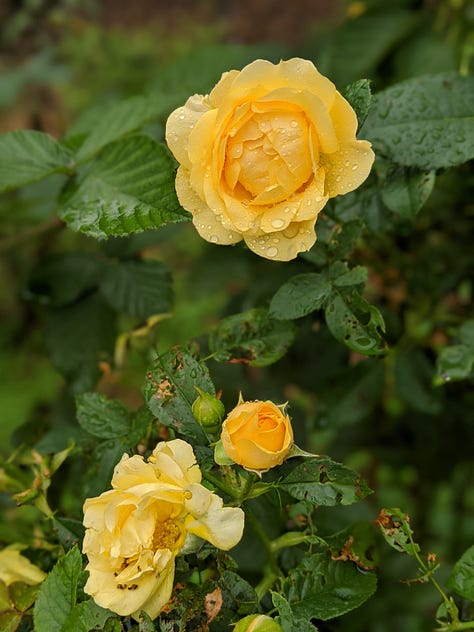
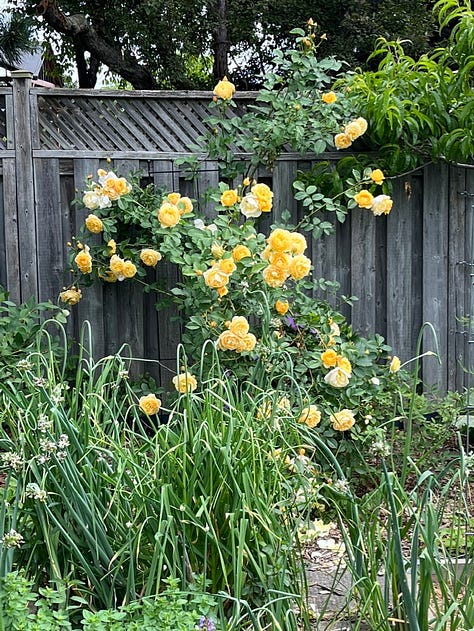
Can we appreciate beauty without truth? Does beauty even exist without truth? I struggled with that Platonic and Keatsian question this last month, but in the end, decided that human truth was fundamental, even in the midst of nature’s beauty.
I posted a photo of the yellow rose Graham Thomas in full flush to
‘s The Gardening Mind and a fellow gardener (not a native English speaker) referred to the shrub as “she” and asked if that was ok since it was named after a man.1As any native Texan would, I immediately agreed. Of course, roses are female. What else would they be? I wrote something about the use of roses in feminine analogies and metaphors, but honestly, I was thinking of Emily Morgan.
It is impossible for a Texan to look at yellow roses and not think of Emily Morgan.
This is how the Southern storyteller in me wants to begin this essay:
Folks, let me tell you about the real Yellow Rose of Texas, heroine of Texas independence. In 1836, Emily Morgan, an enslaved biracial courtesan of great beauty, was sent by her owner, James Morgan, to “entertain” General Antonio López de Santa Anna. She distracted him so effectively (perhaps with opium, and definitely with sex) that when the Texian army swept in, they won the Battle of San Jacinto in 18 minutes, freeing Texas from the yoke of Mexican dictatorship and, ironically, continuing slavery in Texas until June 19, 1865, celebrated now as Juneteenth. We sing Emily Morgan’s praises today in “The Yellow Rose of Texas.”
There is another version of this tale, relayed by Paul Harvey in “The Rest of the Story”2. In this version, Morgan is a virgin slave girl who willingly sacrifices her virtue for Texas Independence.
Regardless of which version you hear, courtesan or virgin, it makes a compelling story – this enslaved woman who bought our freedom with her body and whose sacrifice is honored and remembered today through one of our most enduring songs. As a Texan who was an adolescent during the Texas sesquicentennial and also as an ethnomusicologist I’m fond of it. It demonstrates the complexities of history, the often unrecorded centrality of women, and the unexpected power and memory of music. But, as a trained scholar, I did a little fact checking. And like most propaganda, the story falls apart quickly.
Here is what we know: Emily D. West was a free woman of color, contracted by James Morgan to serve as housekeeper of his hotel in Morgan’s Point, Texas. West and other hotel workers were abducted by Mexican cavalry and were held hostage with the troops when the Texians attacked. When the war was over, West’s paperwork was lost and an American military man had to vouch for her free status and character so she could return home to New York.
That’s all we know. The rest is speculation found in the diary of a man who supposedly heard the story of her sexual sacrifice and Santa Anna’s distraction from General Sam Houston, leader of the Texian army.
Emily West may or may not have “distracted” Santa Anna. As a woman in wartime, she retained little, if any, control over her body. And she’s definitely not the Yellow Rose of Texas. The “Rose of X” was a common trope in 19th century blackfaced minstrelsy. The association between the song and the woman remembered as “Emily Morgan” began as folklorist speculation in the 1950s and caught fire in time for the Texas sesquicentennial in 1986.3
Emily West was a women in war, suffering sexual violence, just as women are experiencing today. She came very close to losing her freedom permanently. During the war, she lost the right to make decisions about her own body, just as Texas women, and women around the US and the world, are experiencing today.
And we sing about it.
Or at least, we think we are singing about it.
And we don’t even know her name.
Sexual conquest as a metaphor for imperial conquest is an ancient myth. A biracial, exotic woman as irresistible temptation is a story as old as war. A woman disrupting male violence through her own sexual power is just as ancient. Perhaps these are stories that Western nations require to justify their land ownership and their very existence.
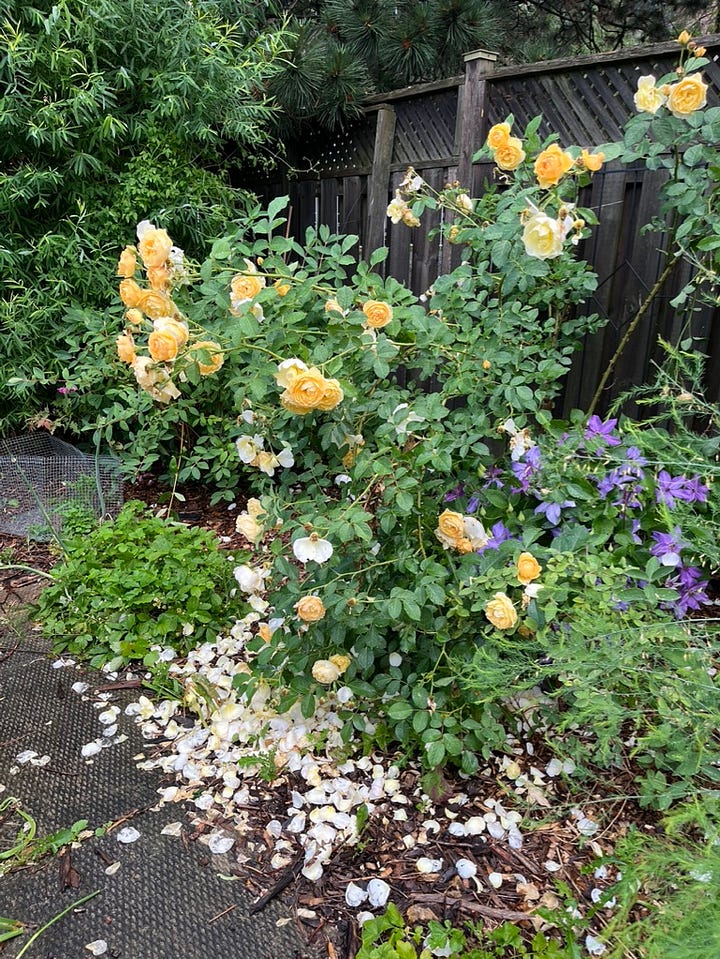
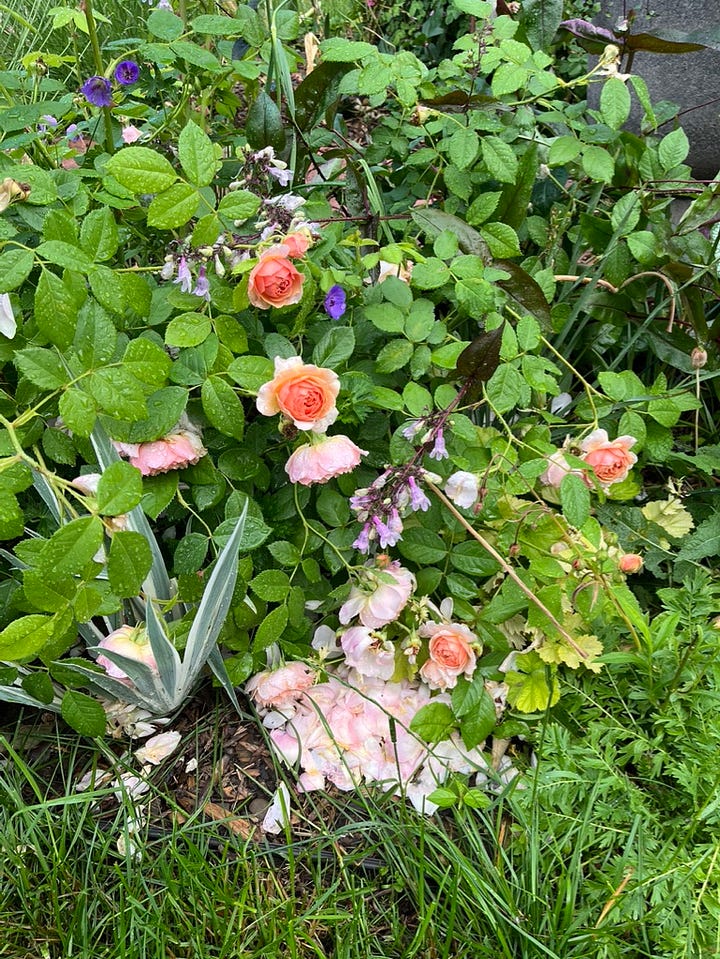
So that’s why I connect my beautiful June roses with women’s bodies and violence. What we think about women, about history, about roses, it’s all connected through some of our oldest analogies, metaphors, and historical propaganda. And yes, they’re beautiful, thorny, and they smell good too.
We do too.
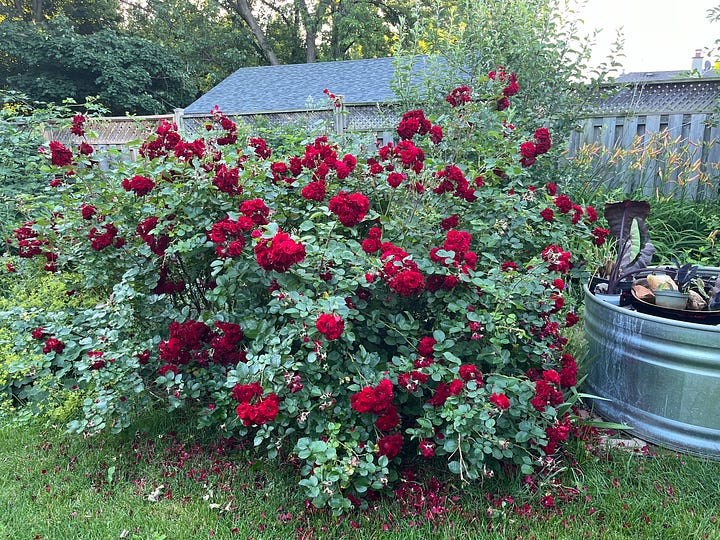
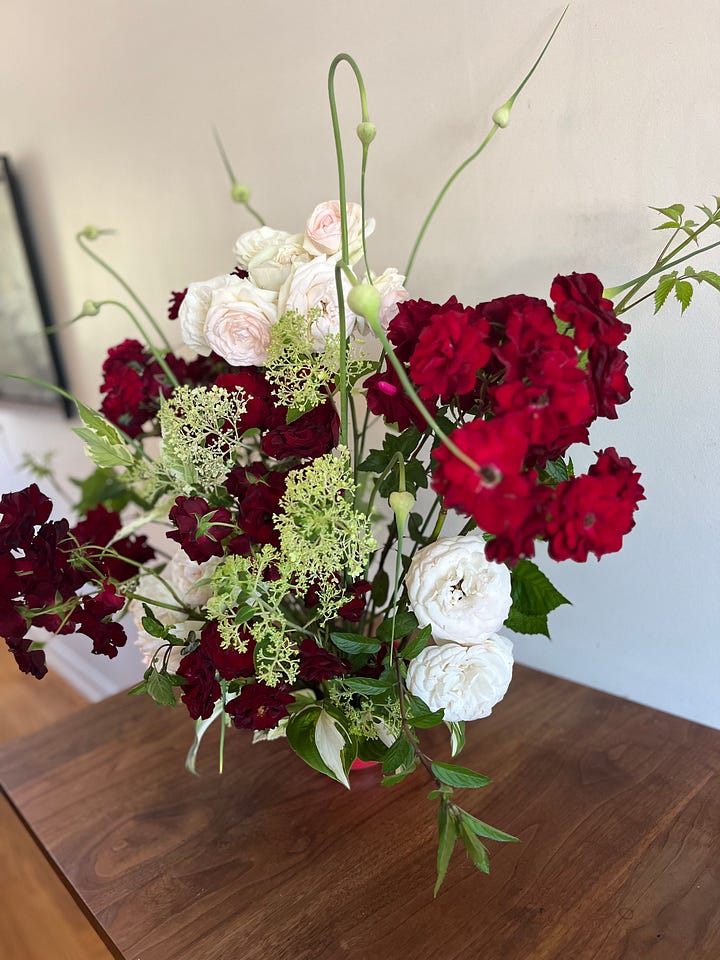
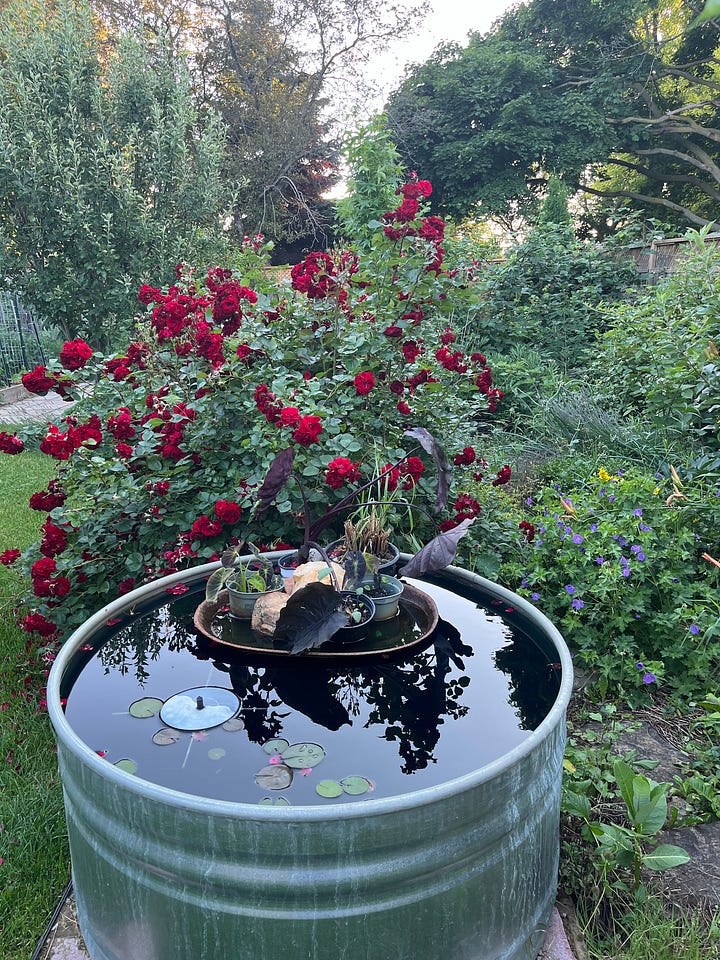

I’ve been thinking about women affected by war, and women serving in the armed forces, as my Navy Lady roses bloomed first on the 80th anniversary of D-Day. Navy Lady floribunda roses were developed by Agriculture Canada for our extreme conditions and named for the Women’s Royal Canadian Naval Service (the Canadian Wrens) in celebration of their centennial. The buds open a dark, velvety red and eventually fade to crimson. It’s unscented and starts a week or two after other roses, but hardy and flowers throughout the whole summer. I have a dozen in my front and back garden, most started from cuttings. They are tough, gorgeous, and mutable.

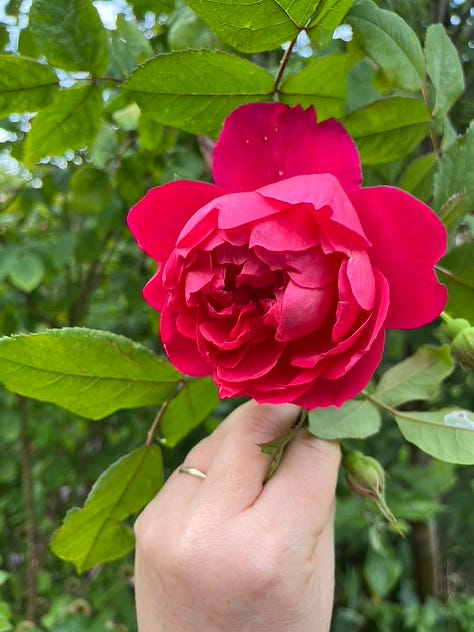
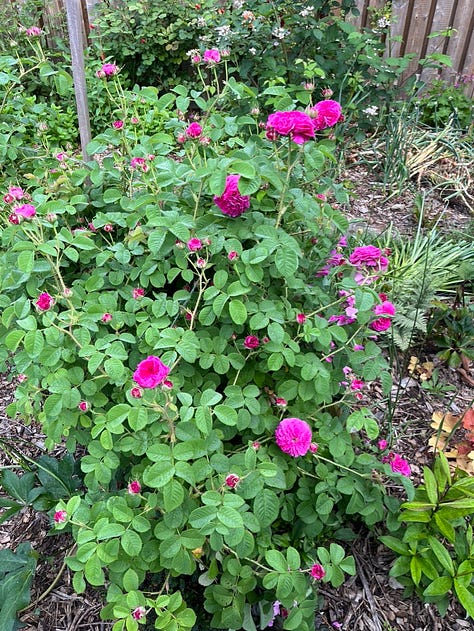
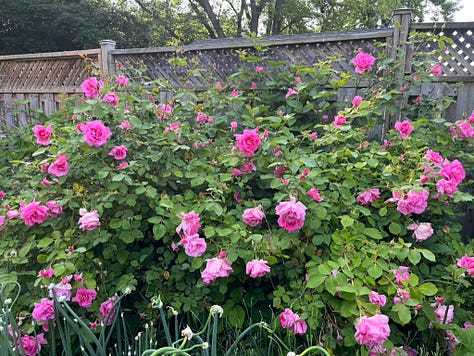
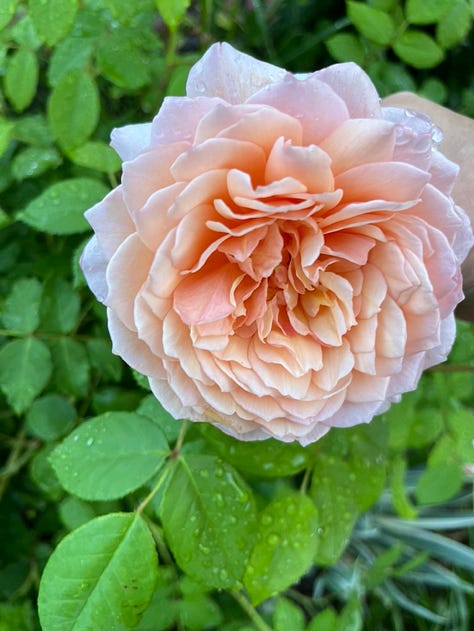
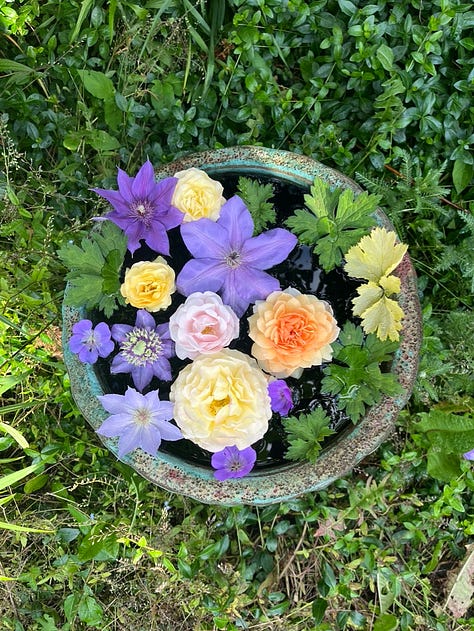
Non-gardeners and new gardeners often ask me about my roses. They have such a reputation for pickiness that people think they’re difficult. And they can be. But really, roses are shrubs and shrubs are tough and want to live. If you choose the right rose for your conditions, roses are easy – easier and less work than most perennials.
I have super hardy roses, like Navy Lady, John Davis, and Carefree Beauty, and roses that require more care. The super hardy roses have no fragrance, but give a great show regardless of conditions. I adore the fragrance and form of my other roses, but they require far more attention. And they do not behave as expected. Benjamin Britten, which has the most exquisite fragrance in my garden, escapes its obelisk and clambers up an apple tree, as if it’s a rambler instead of a short climber. Duc de Cambridge is a thorny monster that I’ve tied into itself. It threw out 3m canes when I was expecting 1.5m at most. But it filled the entire garden with its fragrance.

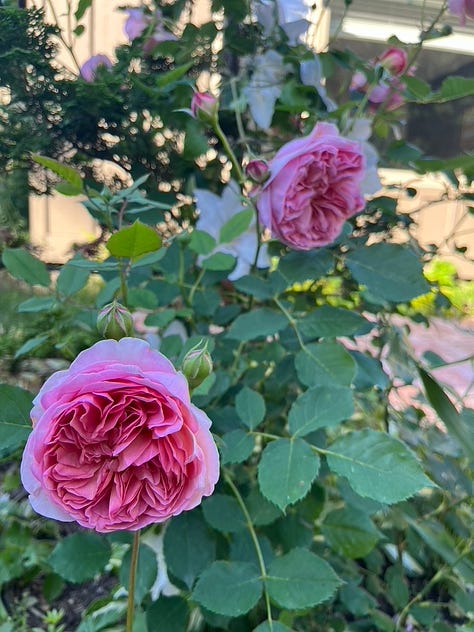
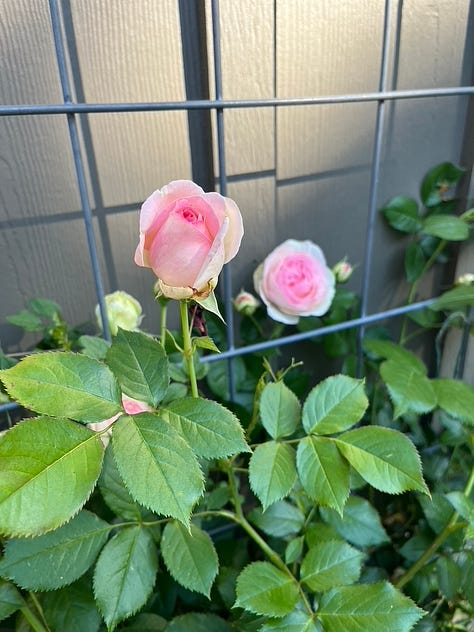
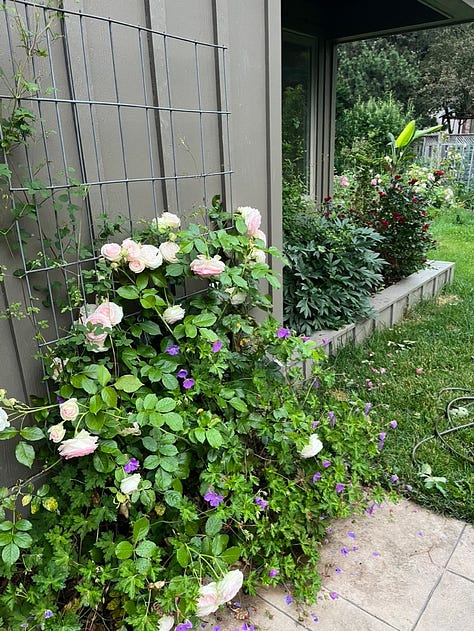
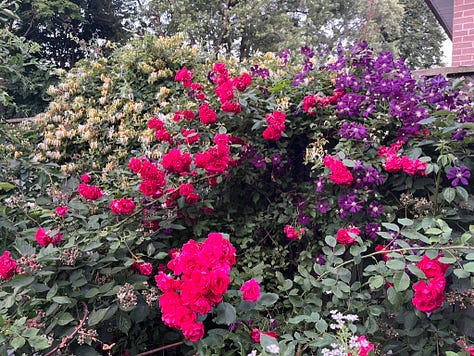
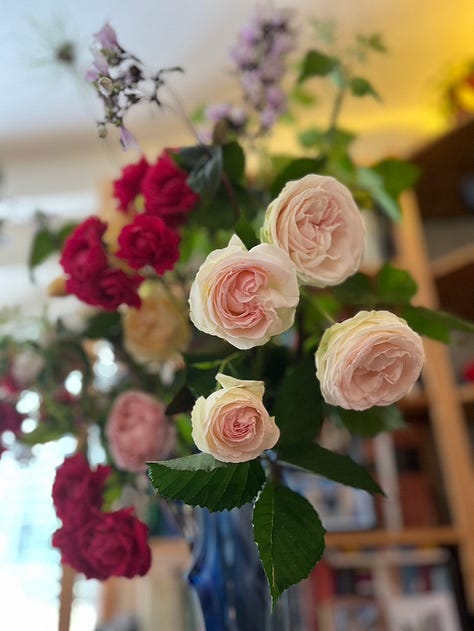
Westerland is far more orange than I expected – really, it’s day-glo orange and the 80s child in me kinda loves it. Dr. Huey came up from the rootstock of a dead rose left by the previous owner, but it puts on such a show I don’t want to replace it – not that I could dig it out if I tried. It’s there for keeps.
Last year I added eight roses, this year two, and I hope that this adorable little rapacious cottontail doesn’t eat them. My garden provides plenty of other food opportunities. I am out of room for roses, and yet, like most gardeners, find a place to squeeze them in, especially the climbers.
What roses do you have? How was your June show? Let me know in the comments.
Here’s a long tour of the early June garden, recorded June 5th.
And here’s a short of the garden from sunrise on July 4th, so you can glimpse how much changes in a month:
I hope you enjoyed these visits to my garden, even if the beauty came with some uncomfortable truths.
“Graham Stuart Thomas,” Wikipedia. accessed June 4, 2024, https://en.wikipedia.org/wiki/Graham_Stuart_Thomas
Paul Harvey, “Emily Morgan,” The Rest of the Story. accessed June 1, 2024.
Jeff Dunn and James Lutzweiler, “Yellow Rose of Texas,” Handbook of Texas Online, accessed June 01, 2024, https://www.tshaonline.org/handbook/entries/yellow-rose-of-texas. Published by the Texas State Historical Association.






